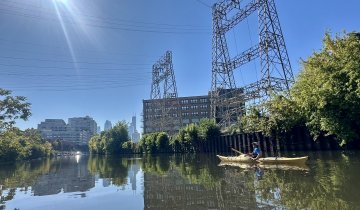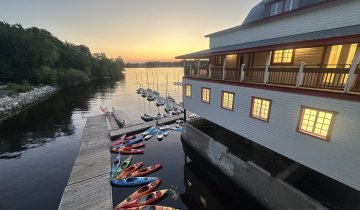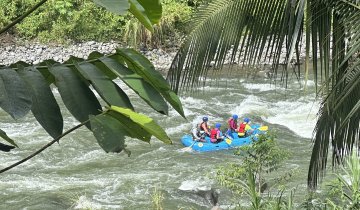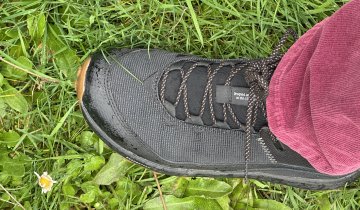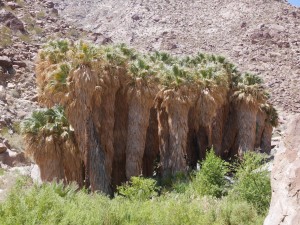 On an April afternoon in the Anza-Borrego Desert, the light was white-hot and the temperature a scorching 91 degrees. When I got out of the car, my eyes, used to Portland gloom, could barely stay open. But after half an hour, they adjusted. Thank goodness. One of my sisters had helpfully warned me about rattlesnake season, so I had to keep a close watch for the desert’s coiled, rattling citizens.
On an April afternoon in the Anza-Borrego Desert, the light was white-hot and the temperature a scorching 91 degrees. When I got out of the car, my eyes, used to Portland gloom, could barely stay open. But after half an hour, they adjusted. Thank goodness. One of my sisters had helpfully warned me about rattlesnake season, so I had to keep a close watch for the desert’s coiled, rattling citizens.
Anza-Borrego Desert State Park is California’s biggest state park. Located on the east side of San Diego County, it includes 12 wilderness areas, 500 miles of dirt roads, and many hiking opportunities for desert lovers. It takes about two hours to drive to the park from San Diego. The name “Borrego” comes from the Spanish word for bighorn sheep, a species which dwells here.
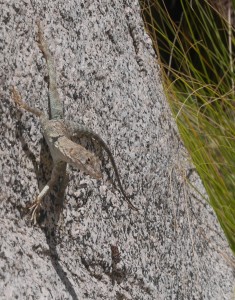 My boyfriend and I had ventured into the desert to go on the park’s most popular hike, a three-mile round-trip to a palm oasis. It’s truly strange to walk through the dry desert – made even drier by the current Southern California drought – then come upon green palm trees and a little creek. It looks like a mirage. But the palm grove is for real. Palms grow along earthquake faults in the desert, where water seeps up and keeps the trees alive. And supposedly coyotes are the gardeners. They eat seeds in one place, then leave them elsewhere in their droppings, thus sprinkling the canyon with palm trees.
My boyfriend and I had ventured into the desert to go on the park’s most popular hike, a three-mile round-trip to a palm oasis. It’s truly strange to walk through the dry desert – made even drier by the current Southern California drought – then come upon green palm trees and a little creek. It looks like a mirage. But the palm grove is for real. Palms grow along earthquake faults in the desert, where water seeps up and keeps the trees alive. And supposedly coyotes are the gardeners. They eat seeds in one place, then leave them elsewhere in their droppings, thus sprinkling the canyon with palm trees.
Back in the 1920s, the Borrego palm canyon inspired folks to plan a desert state park around it. Nowadays the palm canyon trail is the park’s most popular. But on our visit, we encountered only three other people. Like us, they wanted to hang out in the palm-shaded grotto and cool off. In one of those small world travel experiences, one of them had attended the same high school as my boyfriend. Go Pirates!
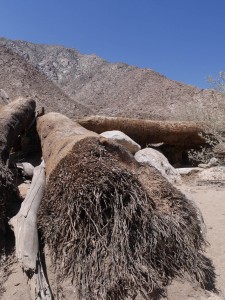 If you find yourself in the Anza-Borrego Desert, this is a fun trail. It’s short and easy, but the sun is bright and hot. Bring lots of water and wear your sunscreen and sun hat. Pack a lunch and plan to relax inside the grotto for a while.
If you find yourself in the Anza-Borrego Desert, this is a fun trail. It’s short and easy, but the sun is bright and hot. Bring lots of water and wear your sunscreen and sun hat. Pack a lunch and plan to relax inside the grotto for a while.
